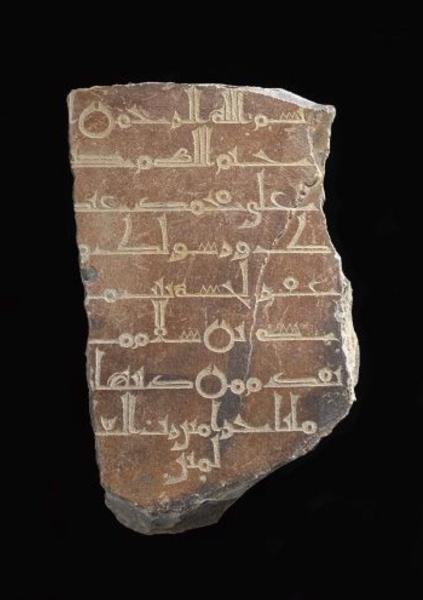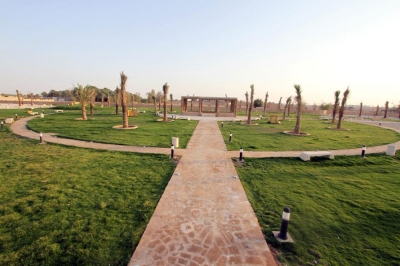

The Basalt Stone with Commemorative Inscription is a basalt stone measuring forty cm in length and eighteen cm in width, featuring an undated decorative archaeological commemorative inscription that dates back to the Islamic period. It was discovered in al-Qunfudhah Governorate in Makkah al-Mukarramah Province, Kingdom of Saudi Arabia.
The commemorative inscription is distinguished by its script style and presentation, utilizing the sunken Jaleel Kufic script. The text begins with the Basmala, filling the first line and part of the second, followed by a prayer for Prophet Muhammad, peace be upon him (PBUH), and a supplication for forgiveness for the inscription’s owner, Hessa Bint Musa Bin Salam. The letters exhibit distinctive characteristics, such as the shape of the Arabic letter nun and the teeth of the Arabic letter seen. It is noted that some parts of the letters have been lost over time.
History of the stone
The basalt stone with its commemorative inscription dates back to the Islamic period, specifically to the ninth century. It was used to record a commemorative inscription.
The basalt stone is registered under number 314879 and is preserved at the King Fahd National Library in the capital, Riyadh. It is part of the findings from archaeological surveys and excavations conducted by the antiquities and museums sector in Saudi Arabia over the past years, as well as the discoveries of Saudi archaeologists and scientific expeditions.
The stone was part of a selected collection of archaeological discoveries from Saudi Arabia featured in the Saudi Archeological Masterpieces Through the Ages Exhibition. The exhibition began its global tour in 2010 at the Louvre Museum in Paris.
Significance of the stone
The design of the text's letters reflects the refined artistic sense, skill, and meticulousness of the calligrapher in executing the work. The inscription itself highlights a significant phase in the development of Arabic script, as it was crafted using the Floral Kufic script. This is evident in the precise drawing of the letters meem and nun and the beauty of their curvature, along with the alignment of the text lines and the balanced proportion of words within the inscription.
Related quizzes
Related articles
